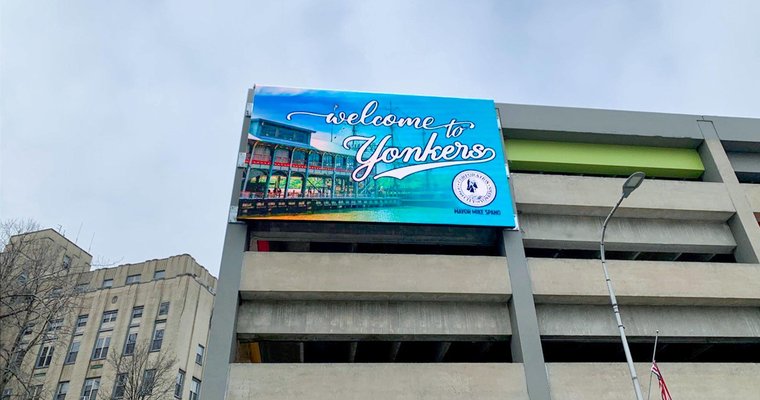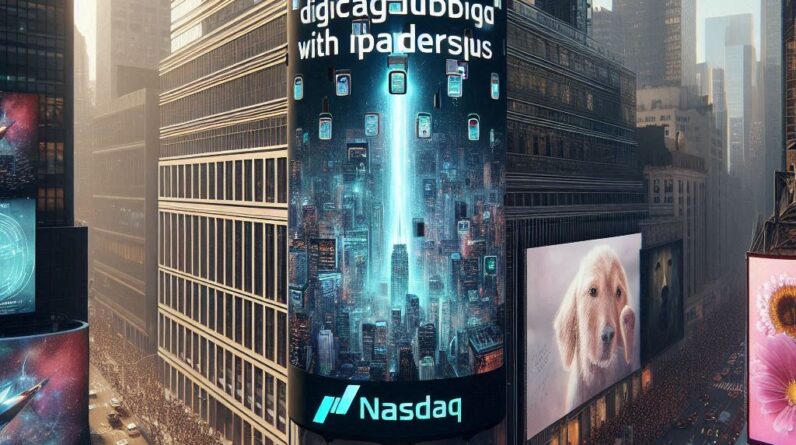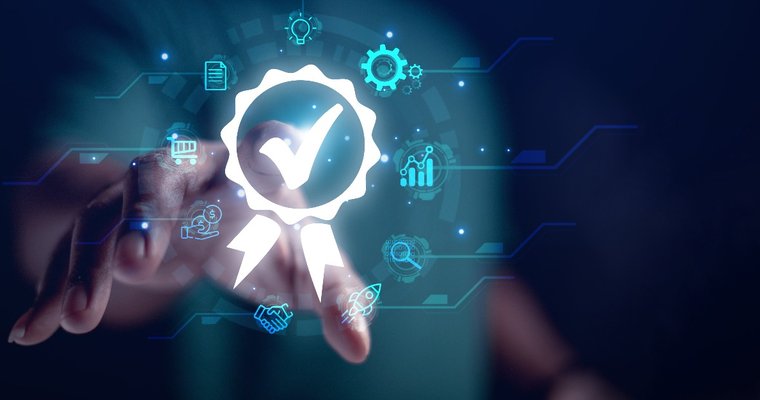
[ad_1]
Dr. Micah Shippee makes a strong case for embracing emerging technologies, from digital signage to AI and ChatGPT, as their impact is inevitable across education, the workplace, and our daily lives. Interview includes comments on Columbus High School digital signage project (previously reported in DST).
 Image provided by Adobe Stock.
Image provided by Adobe Stock.
 |
Image provided by Merritt Group. |
Dr. Micah Shippee, PhD, joined Digital Signage Today editor Daniel Brown via video link from his office in Syracuse, New York to discuss AI, education, and strategies for grappling with the rapidly changing world across fields.
Shippee is an experienced educator, ed tech consultant, instructional designer, and academic researcher who has taught for 22 years in public education (including 3-4 years at university level as an adjunct professor). He has also worked as a global education technology consultant.
His research is focused on organizational adoption and change management, and his thesis involved what he calls M-learning (mobile learning). “So I took a spin off of e-learning and wanted to look at M-learning. I actually did a study with an organization, a not-for-profit, that wanted to deliver training materials to workers in Kenya that had no electricity. So, they could use a phone, they could charge it with solar power, they could drive miles into town to download content, and then come back to their home and use it for learning.”
The initial project was unsuccessful, but that didn’t deter Shippee from his lifelong quest to study the power of technology to help humans and organizations with learning. “The whole project failed, which was fine, because failure is one of the best places to learn. It provides a fertile ground for informing better practice.”
Shippee developed what he calls the Fusion Model in his thesis, which helps explain the best way to help organizations adopt innovations.
The headlines are filled with fear-mongering about AI and other innovations, but Shippee recommends that we face those fears, turning to a historical example: the pencil.
“Chicago public schools took one hundred years to adopt the pencil in teaching and learning,” Shippee explained. The debates and fears around students potentially misusing the technology reveal the exact same patterns and arguments we see today around things like ChatGPT, he added. After all, history shows Sumerian tablets recording the grumbling of city elders about the invention of cuneiform writing, arguing that people will no longer be able to remember anything if they start to write things down.
Serendipitously, before this interview, Shippee had just flown back to New York after delivering a keynote in Dallas called “Wanderlust,” eponymous with one of his published books, which he says is one of his favorite keynotes to deliver. The topic is change, including a live demo of ChatGPT for teachers in the audience.
“So I asked the question: ‘Am I the author?’ And you get crickets,” Shippee said. “That’s a really tough one. That package wouldn’t have existed if it wasn’t for me, but did I write the whole thing?”
Given this difficulty, what does he feel is the main use of ChatGPT?
Shippee says he’s been thinking about this a lot. Coding is not a skill of the future, he argues; rather, it’s about knowing how to ask the right questions (echoing philosophers like E.O. Wilson). As an education expert and consultant, Shippee argues that the current American school system’s STEM-heavy focus is deeply rooted in the Postwar anticommunist ethos of various American presidential administrations who sought to “beat the Commies” to various STEM innovations and technologies; this aging ethos is not well-suited to solving the world’s next-gen problems, he contends.
“The United Nations Sustainable Development Goals, the SDGs, those are next gen problems that we should be looking to solve, and that brings in humanities, and authentic narrative to describe problems, to describe solutions in a way that plugging in better factory workers doesn’t quite do.”
Thus, the goal is to help students know how to ask the right questions in a creative way that finds the right answers, using the new resources, in a holistic way, and make good decisions. “So that ties directly into what we’re doing at Samsung. I have a team of former educators – but I’ve made it very clear, just saying they’re former educators is not good enough… I brought in authors, they had specialties, special skills, and by the way they were former teachers, and we talk to schools about shifting their practice, and how Samsung amplifies that.
“So where we bring in a beautiful display, we don’t say to them: ‘You must use this proprietary software to teach effectively.’ We don’t say that. We say: What are you using, what are you using well? Let’s help you use it even better with this technology. And that’s the difference between us and what I’ve seen on the marketplace is that it’s a mindset, it’s about, you’re already doing great things, let’s do even better with this technology.”
This ties into themes like relationships, the ecosystems approach in biz/tech, and coopetition. “Relationshpis first,” he said. “That’s our mantra.”
Christopher Columbus High School and its digital transformation is a classic example, Shippee says, where Alex Seage brought digital signage into the classroom.
“Alex is a real thought leader. He brought some real awesome industry thinking into education, which I love. And I love how it goes back and forth. I’m bringing education experience to industry; Alex brought industry to education. And it’s just so cool. The symmetry is amazing, and what we’re producing is not in conflict. It’s a better end delivery learning experience for the kids, and that’s what it’s all about.”
On the general specter of negativity on innovation and technology, including ChatGPT and AI, what is Shippee’s approach?
“Well, a couple of things. For one, it’s not going to stop.” Shippee smiled. “So, we can pretend that ChatGPT doesn’t exist. It’s going to exist and it’s going to cause massive change. We’re in the middle of a catalyst. Some view it as a crucible. I vew it as a positive change. It will – it will– change the workplace.
“So, we don’t have to love that — I love writing, but I’m watching this technology writing for me (and it’s a little scary, but it’s writing a little better than I write.) So I don’t have to like that, but it is. So now it’s about: How do we leverage this for good. And how do we teach our students to think about world problems, in a different way, that can be solved through these powerful tools?
“So, it’s actually pretty cool. We can promote much more positive change if we are judicious about how we handle these technologies. And all of these technologies, they can be used for evil. It’s like any supervillain, right? You can use these technologies for bad. We’ve all seen the Terminator and we’re all thinking Skynet right away. Obviously, it can go bad, obviously it can go wrong. But that’s what the old phrase — it’s nowold — ‘digital citizenship’ is about.
“Digital citizenship is how we conduct ourselves in an online world, a digital world, teaching etiquette, as well as workflows, how to be efficient and productive in an online synchronous and asynchronous space, even in abrick-and-mortarclassroom sitting next to somebody — how are you productive digitally? In the absence of paper, for example?”
One analogy for the massive global shift across digital signage, marketing, creativity, education, and other human endeavors might be a symphony conductor; one could argue that the conductor doesn’t play each instrument, but they are still the “author” of a given performance, because they are uniting separate elements into a unique, personal whole.
Shippee recommends concepts from a book calledThe Augmented Humanalong withThe Augmented Workforceby Kathy Hackel.
“We ARE augmented. When I go drive, I turn on Google Maps. That is a cognitive load off my brain. I don’t think I’m the only person on the planet, that when I put a reminder in my phone, I have a sigh of relief that I don’t have to remember it. That’s an augmentatioin. That’s using technology to make my life less stressful. So those types of augmentations to our workflow, we are already doing.”
Referencing mixed reality, Shippee says we will soon have a 24/7 metaverse available through our glasses to enhance our lives, though we will be able to turn it off when needed for mental health. Early examples include interactive and augmented reality technologies, such as Samsung’s built-in ability to cast from mobile devices to smart boards, or the DeX product that allows compatible screens to become your phone.
“That’s the way the world is going. So having technologies that can scale into, is what gets me excited,” Shippee concluded.
Daniel Brown is the editor of Digital Signage Today. He is an accomplished technology writer whose experience includes creating knowledge base content for a major university’s computing services department. His previous experience also includes IT project management, technical support and education. He can usually be found in a coffee shop near a large pile of books.
[ad_2]
Source link






